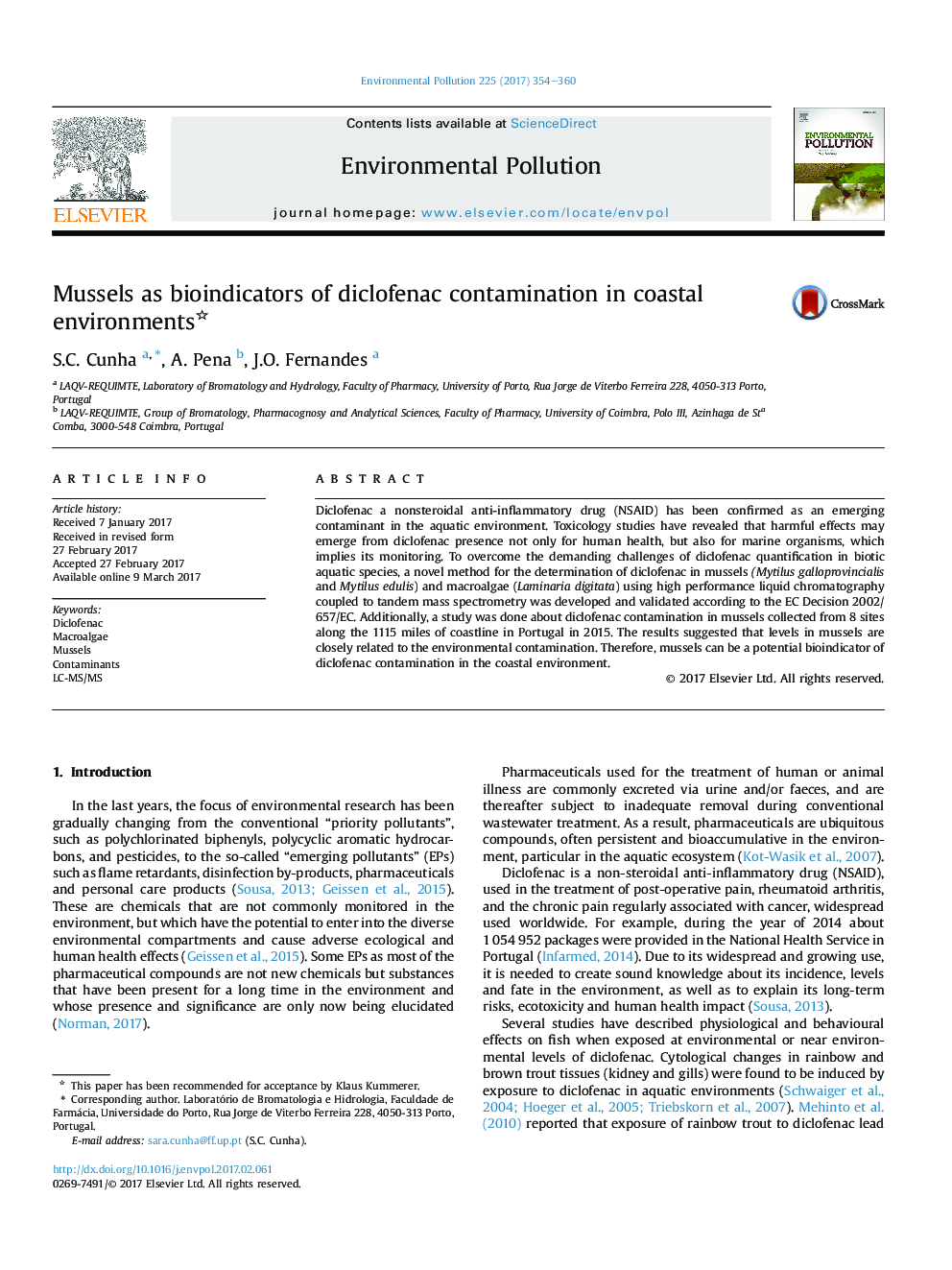| کد مقاله | کد نشریه | سال انتشار | مقاله انگلیسی | نسخه تمام متن |
|---|---|---|---|---|
| 5748942 | 1619148 | 2017 | 7 صفحه PDF | دانلود رایگان |
- Simple, high throughput LC-MS/MS trace analysis of diclofenac in mussels and algae.
- Diclofenac ranged from 0.5 to 4.5 μg/kg dw in mussels.
- Diclofenac was widespread in mussels along the coastal waters of Portugal.
- Mussels could be used as a potential bioindicator of diclofenac contamination.
Diclofenac a nonsteroidal anti-inflammatory drug (NSAID) has been confirmed as an emerging contaminant in the aquatic environment. Toxicology studies have revealed that harmful effects may emerge from diclofenac presence not only for human health, but also for marine organisms, which implies its monitoring. To overcome the demanding challenges of diclofenac quantification in biotic aquatic species, a novel method for the determination of diclofenac in mussels (Mytilus galloprovincialis and Mytilus edulis) and macroalgae (Laminaria digitata) using high performance liquid chromatography coupled to tandem mass spectrometry was developed and validated according to the EC Decision 2002/657/EC. Additionally, a study was done about diclofenac contamination in mussels collected from 8 sites along the 1115 miles of coastline in Portugal in 2015. The results suggested that levels in mussels are closely related to the environmental contamination. Therefore, mussels can be a potential bioindicator of diclofenac contamination in the coastal environment.
131
Journal: Environmental Pollution - Volume 225, June 2017, Pages 354-360
